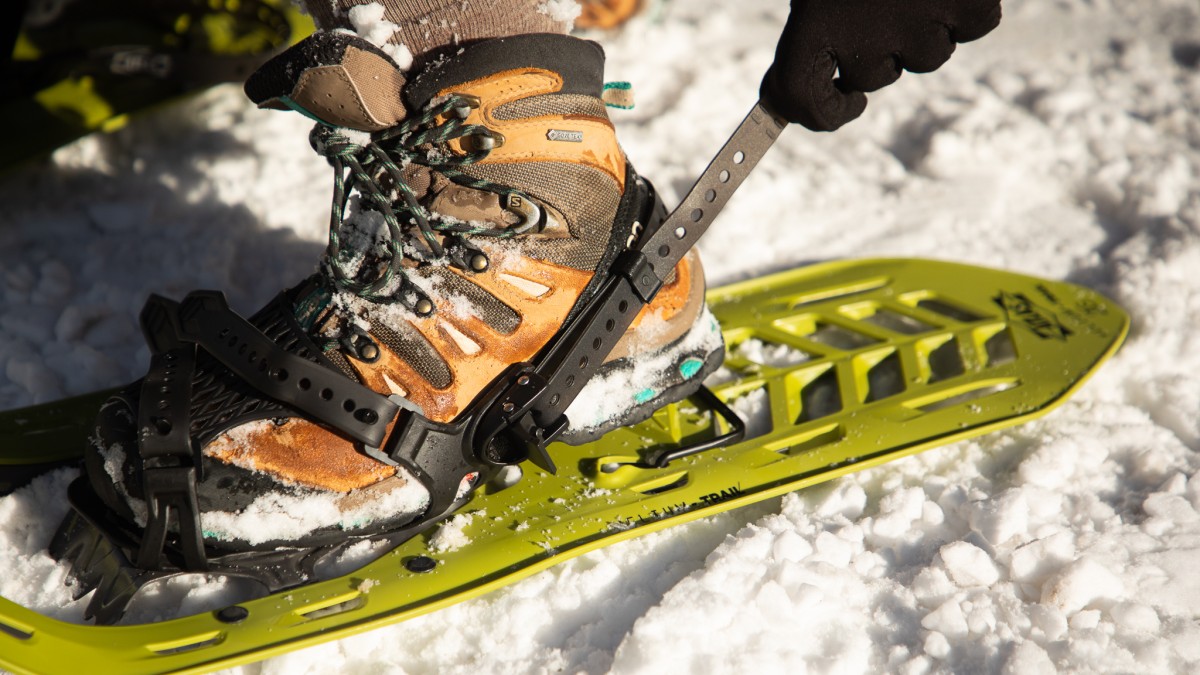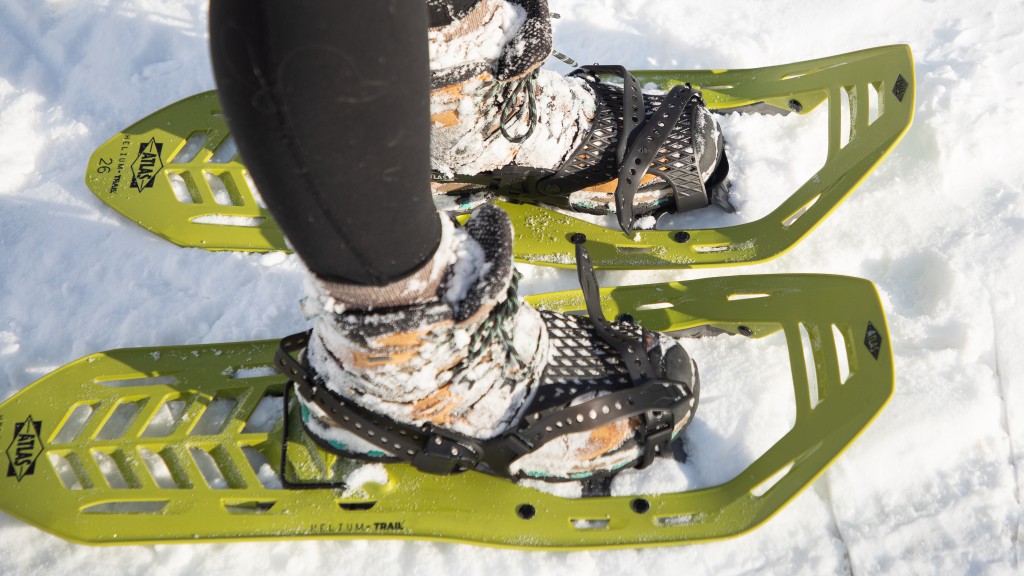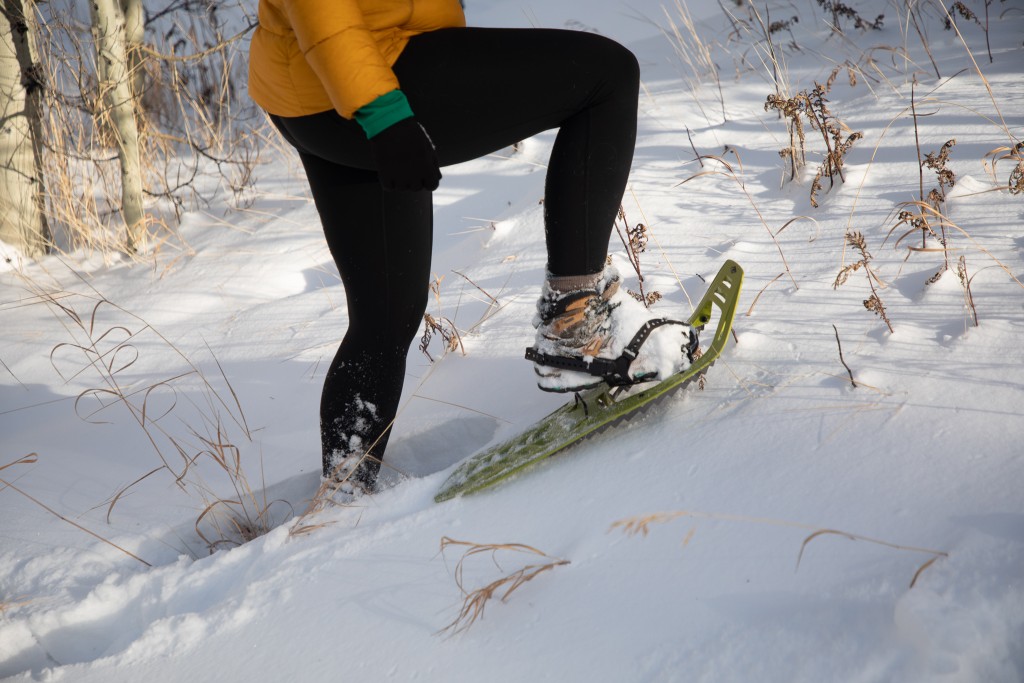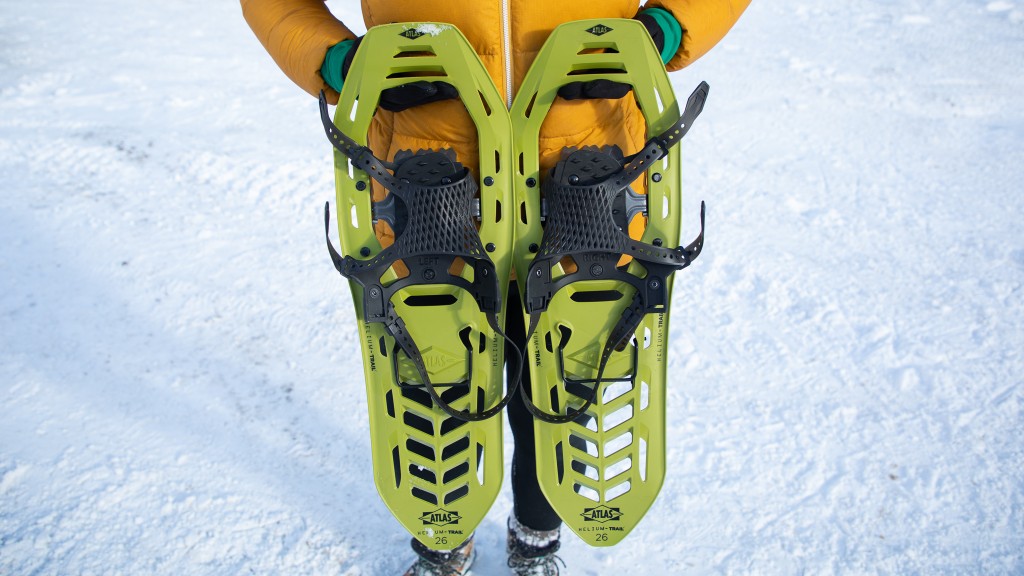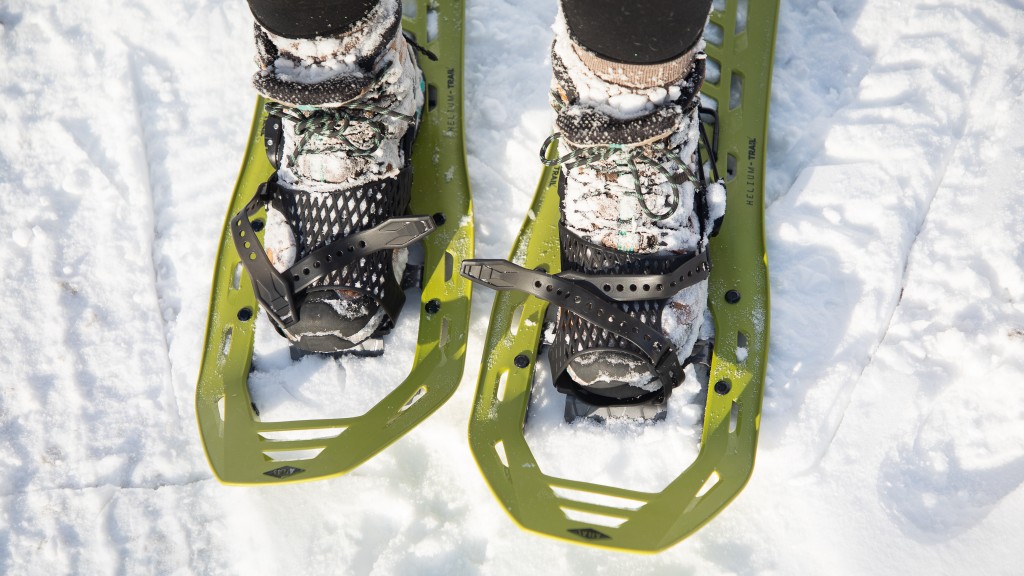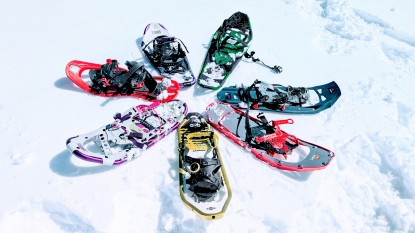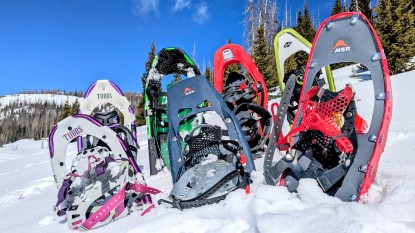Atlas Helium Trail - Women's Review
Our Verdict
Our Analysis and Test Results
A supportive, user-friendly binding system and traction rail/crampon combination make this snowshoe a great all-around option for easy to intermediate terrain. Read on to see why the Helium Trail is all the rage for beginner snowshoers.
Performance Comparison
Flotation
Flotation is a critical aspect of snowshoeing, and its importance varies depending on the terrain you plan to tackle; it is much harder to stay afloat on loose deep snow than on packed snow. The lightweight plastic composite decking on the Helium offers some flotation, but this snowshoe is better suited for packed trails than fresh powder.
While the Helium Trail will keep you from falling hip-deep into fresh powder, it performs best on medium to heavily packed snow. The entire snowshoe is made of solid composite material, and the surface area is plentiful, but there are a lot of holes that allow snow through, causing the shoe to sink.
At three pounds, these snowshoes are some of the lightest in our test suite, and the louver design sheds snow quickly, ensuring that you aren't hauling any unnecessary weight. This contributes positively to float, but the holes and general shape make this shoe best for less extreme conditions.
Traction
The Helium Trail is designed for more heavily packed snow and ice, so while flotation may not factor too heavily into its overall performance, traction does. During our testing, we pay attention to the location and heftiness of the crampons. We also take note of the texture on the bottom of the snowshoe and additional traction features like teeth around the perimeter.
The fore-foot placement of the tempered steel crampon on this snowshoe not only helps shed snow and keep it lightweight for flotation but also helps create traction in the toe. The carbon steel TRAIL crampon placement is especially helpful for walking uphill. The jagged teeth cut through snow and ice alike, offering a decent grip on most terrain. The traction rails run two-thirds the length of the snowshoe and parallel to the foot. They provide stability and control in most conditions, and teeth are angled from front to back, ensuring that you can stride forward naturally.
The Helium offers great traction through the toe crampon and rails when hiking uphill, but walking downhill is a different story. Because the rails angle backward, they are not as effective while descending. Since people tend to weight their heels while walking downhill, teeth or crampons near the heel would improve downhill traction.
Stride Ergonomics
Regardless of how thoughtful the design is, wearing snowshoes will require adjusting your gait. That said, there are a lot of design factors that help mitigate the duck waddle and stepping on your own toes. The shape and size of the shoe are two that directly affect the way you walk. During our stride ergonomics testing, we also pay attention to the angle at which the snowshoe pivots from the foot. Those with particularly narrow hips are bound to have more trouble with larger snowshoes.
The Helium Trail is a fairly boxy snowshoe and does not offer much curvature. The slight taper at the nose is meant to help keep you from stepping on your toes, but the hard angles easily get caught on each other, especially if you have shorter legs. You won't be falling to the ground every time you take a step, but it is worth noting that this shoe may not be the best option for someone with a particularly narrow gait.
The entire shoe is made of composite material, and the traction rails only run two-thirds the length of the snowshoe, so the shoe flexes naturally from heel to toe while you walk. The angle that the snowshoe pivots from the toe is wide enough that snow falls naturally off the back, ensuring you aren't carrying any unnecessary weight.
Ease of Use
To test this metric, we fasten the bindings over various shoes, from hiking boots to trail runners. We make many adjustments throughout our hikes with and without gloves, deploying the heel lift with hiking poles on all kinds of terrain.
The Helium Trail bindings are very easy to adjust, but tucking the straps away after adjusting them can feel a little cumbersome with thick mittens on. The 12-degree heel lift easily opens up, providing plenty of relief when climbing those long steep hills, and it easily stores flat for the decent. Offered in three lengths, the Helium works well for people up to 270-plus pounds.
Unfortunately, the composite decking on the Helium is quite loud, which can be distracting when trying to enjoy the outdoors or a conversation with your hiking buddy. The strap keepers around the heel also do not do a great job of keeping the straps tucked away, especially when they get cold and stiff.
Bindings
Comfort, support, and adjustability are attributes that contribute heavily to a top-tier binding. Unevenly distributed pressure can cause pinching and rubbing, negatively affecting the overall experience. The Helium Trail features a comfortable, easy-to-use binding system called the Wrapp Stretch binding. The rubber straps cross over the forefoot, evenly distributing the weight of the snowshoe across the entire front of the foot. The TPU heel strap is notched like a belt and is very easy to adjust on the go. The entire binding system hinges at the toe, offering a natural stride, and slipping in and out of these snowshoes is a breeze. Our biggest bone to pick here is that the straps flop around.
Should You Buy the Atlas Helium Trail?
It can be difficult to fork over hundreds of dollars just to get started in a new sport, and that's where the Helium Trail comes in. This snowshoe works wonders on beginner trails with somewhat packed snow, ice, and other obstacles. If you are breaking into the wonderful world of winter hiking and want a reliable pair of snowshoes for easy to intermediate terrain, this snowshoe is a great value.
What Other Snowshoes Should You Consider?
If you're looking for a budget-friendly option that can take on a variety of terrains, the MSR Evo Trail is a great option. The Evo Trail has add-on tails for additional float sold separately. For a more convenient and comfortable binding system, the Tubbs Wilderness is only a few dollars more. If money is not an issue and you want the best of the best, the MSR Lightning Ascent and Atlas Range-MTN are top-notch performers.


